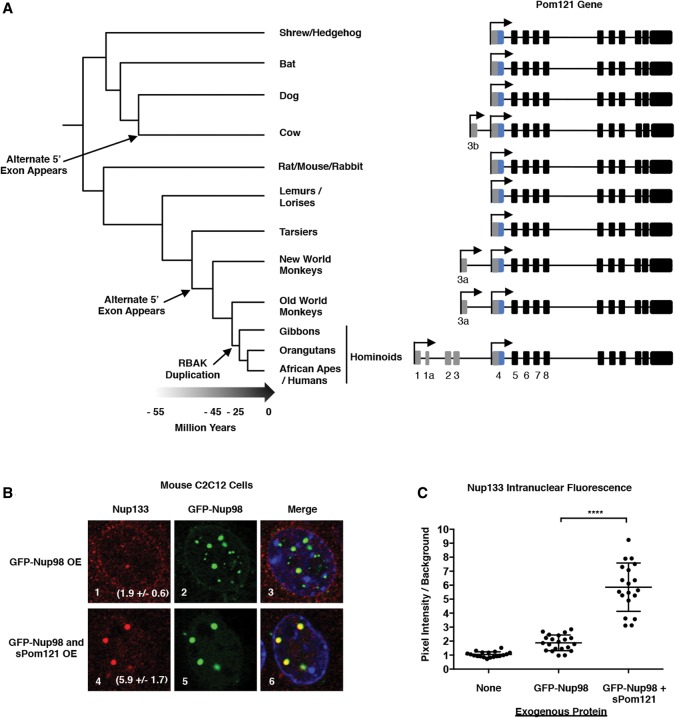Figure 6.
The hominoid version of sPom121 evolved recently and can recruit the Nup107/160 complex to the nucleoplasm when expressed in nonhominoid cells. (A) Novel upstream exons acquired sporadically during mammalian evolution are indicated in gray, while the Pom121 TM domain-coding exon (exon 4) is shown in blue, and the exons coding for the Pom121 ORF are shown in black. Note that, for simplicity, we are not showing the hominoid-specific duplication of the Pom121 gene (Pom121C). The gene structure of Pom121C is similar to the Pom121 locus, which is shown. (B) Localization of the endogenous Nup133 protein in mouse C2C12 cells in the presence of exogenous GFP-Nup98 or GFP-Nup98 and sPom121 together. The fold increase in Nup133 intensity in transfected cells relative to untransfected cells is shown in the bottom right corner of panels 1 and 4. (C) Plot of the fluorescence intensity of intranuclear Nup133. The intensity of Nup133 intranuclear foci in transfected cells was measured and plotted relative to Nup133 intranuclear staining in untransfected cells (background).

